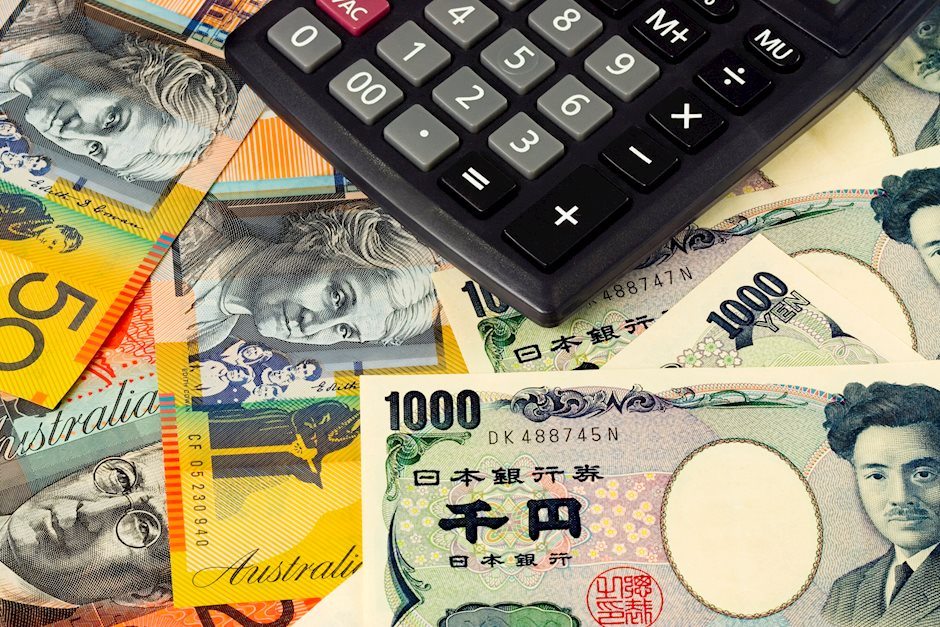AUD/JPY rebounds above 98.00 on positive risk tone
- AUD/JPY holds positive ground around 98.30 in Thursday’s early European session.
- Japan’s foreign stock investments fell by ¥446B, weighing on the Japanese Yen.
- The hawkish expectations of the RBA provide some support to the Aussie.

The AUD/JPY cross recovers some lost ground to near 98.30, snapping the three-day losing streak during the early European session on Thursday. A generally positive risk tone and a decline in Japan’s foreign stock investments drag the Japanese Yen (JPY) lower against the Australian Dollar (AUD).
Data released by the Ministry of Finance showed on Thursday that foreign investment in Japanese stocks fell by ¥446 billion for the week ending November 23, compared to investments of ¥127.6 billion in the previous week. Foreign capital outflows exert some selling pressure on the JPY and act as a tailwind for AUD/JPY. Nonetheless, the rising geopolitical tensions in the Middle East and the Russia-Ukraine war could boost the safe-haven flows, benefiting the JPY against the Aussie.
On the other hand, the downside for the AUD might be limited due to the hawkish remarks from the Reserve Bank of Australia (RBA). Australia’s monthly Consumer Price Index (CPI) inflation for October remained well within the Australian central bank target, but the RBA is likely to want more proof price rises have moderated before it will cut interest rates. Capital Economics' Mr. Thieliant said that price pressures are only moderating very slowly.
"And with the RBA arguing at its latest meeting that it would need to see more than one good quarterly CPI print to be confident that such a decline is sustainable, we're comfortable with our forecast that the bank will only cut interest rates in the second quarter of next year,” added Thieliant.
Australian Dollar FAQs
One of the most significant factors for the Australian Dollar (AUD) is the level of interest rates set by the Reserve Bank of Australia (RBA). Because Australia is a resource-rich country another key driver is the price of its biggest export, Iron Ore. The health of the Chinese economy, its largest trading partner, is a factor, as well as inflation in Australia, its growth rate and Trade Balance. Market sentiment – whether investors are taking on more risky assets (risk-on) or seeking safe-havens (risk-off) – is also a factor, with risk-on positive for AUD.
The Reserve Bank of Australia (RBA) influences the Australian Dollar (AUD) by setting the level of interest rates that Australian banks can lend to each other. This influences the level of interest rates in the economy as a whole. The main goal of the RBA is to maintain a stable inflation rate of 2-3% by adjusting interest rates up or down. Relatively high interest rates compared to other major central banks support the AUD, and the opposite for relatively low. The RBA can also use quantitative easing and tightening to influence credit conditions, with the former AUD-negative and the latter AUD-positive.
China is Australia’s largest trading partner so the health of the Chinese economy is a major influence on the value of the Australian Dollar (AUD). When the Chinese economy is doing well it purchases more raw materials, goods and services from Australia, lifting demand for the AUD, and pushing up its value. The opposite is the case when the Chinese economy is not growing as fast as expected. Positive or negative surprises in Chinese growth data, therefore, often have a direct impact on the Australian Dollar and its pairs.
Iron Ore is Australia’s largest export, accounting for $118 billion a year according to data from 2021, with China as its primary destination. The price of Iron Ore, therefore, can be a driver of the Australian Dollar. Generally, if the price of Iron Ore rises, AUD also goes up, as aggregate demand for the currency increases. The opposite is the case if the price of Iron Ore falls. Higher Iron Ore prices also tend to result in a greater likelihood of a positive Trade Balance for Australia, which is also positive of the AUD.
The Trade Balance, which is the difference between what a country earns from its exports versus what it pays for its imports, is another factor that can influence the value of the Australian Dollar. If Australia produces highly sought after exports, then its currency will gain in value purely from the surplus demand created from foreign buyers seeking to purchase its exports versus what it spends to purchase imports. Therefore, a positive net Trade Balance strengthens the AUD, with the opposite effect if the Trade Balance is negative.
Author

Lallalit Srijandorn
FXStreet
Lallalit Srijandorn is a Parisian at heart. She has lived in France since 2019 and now becomes a digital entrepreneur based in Paris and Bangkok.

















